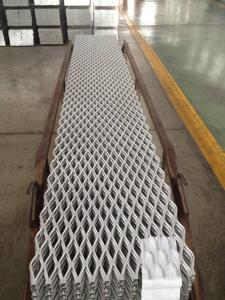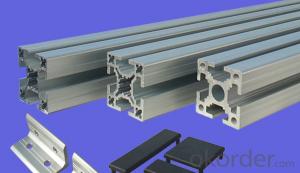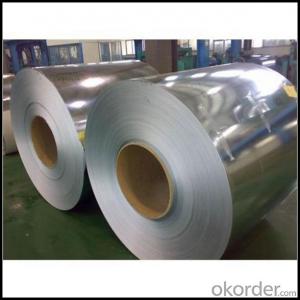Hot Sale Aluminium Walkway
OKorder Service Pledge
OKorder Financial Service
You Might Also Like
Hot Sale Aluminium Walkway
Alloy: 6xxx
Applications: Safety grating, stair tread, walkway, cat-way, flooring
Standard package: suitable for long ocean transporting
OEM&ODM is welcome
Life Time:Last for life time
Diamond openings are complete with radiused corners at the saddle and side channel location
Specifications
1) Thickness:3.0mm
2) SWDxLWD:25x50mm
3) Competitive Price
Others:
Material: aluminum plate
Hole shape: diamond,hexagonal..
Pattern: Standard - raised surface aluminum expanded metal mesh, Flattended aluminum expanded metal mesh
Packing: moist-proof paper/pallet -wooden cases or wooden pallets or iron pallets
Surface treatment:powder coating,pvc coated, anodizing(oxidation)
Characteristic: The aluminum expanded metal mesh are made by the aluminum plate,widely used in the civil buildingand sound abatment material inthe hall,meeting rooms,walkway mesh.And the aluminum expanded metal meshs surface can be powder coating or PVC coated ,ex.:white,red, green etc.this is a good material for the decoration,it's very beautiful used for the housetop or walkway.
- Q:What are the advantages of using aluminum profiles in the oil and gas industry?
- Using aluminum profiles in the oil and gas industry offers numerous benefits. First and foremost, aluminum profiles boast an exceptional strength-to-weight ratio. This means they provide excellent structural integrity while remaining lightweight, a crucial factor when transporting and installing equipment in different locations. Moreover, the lightweight nature of aluminum profiles reduces the strain on structures and equipment, resulting in energy savings and enhanced efficiency. Secondly, aluminum profiles exhibit remarkable resistance to corrosion. Given that the oil and gas industry often operates in harsh environments with exposure to saltwater, chemicals, and extreme temperatures, the natural oxide layer of aluminum acts as a protective barrier, ensuring durability and preventing corrosion. This corrosion resistance significantly reduces maintenance and replacement costs throughout the equipment's lifespan. Furthermore, aluminum profiles are non-magnetic, making them ideal for applications where magnetic interference is a concern. In the oil and gas industry, precision and accuracy are paramount, and the non-magnetic properties of aluminum profiles ensure that equipment operates without any electromagnetic interference, guaranteeing data accuracy and reliable performance. Additionally, aluminum profiles can be easily fabricated and customized to meet specific requirements. They can be extruded into various shapes, sizes, and configurations, providing endless design possibilities. This manufacturing flexibility makes aluminum profiles highly versatile, allowing them to be utilized in a wide range of applications within the oil and gas industry, such as pipe racks, platforms, support structures, and access systems. Lastly, aluminum is an environmentally friendly and sustainable material. It is 100% recyclable without losing its properties, making it an ideal choice for the oil and gas industry, which increasingly focuses on reducing its carbon footprint. The recyclability of aluminum also contributes to cost savings and resource conservation. In conclusion, the advantages of using aluminum profiles in the oil and gas industry encompass their high strength-to-weight ratio, corrosion resistance, non-magnetic properties, easy fabrication, and recyclability. These characteristics make aluminum profiles a dependable and cost-effective solution for various applications within this industry.
- Q:Are there any special considerations for installing aluminum profiles?
- Yes, there are several special considerations for installing aluminum profiles. Firstly, it is important to ensure that the profiles are properly aligned and leveled during installation. This is crucial for achieving a seamless and professional-looking finished product. Using a laser level or a spirit level can help in this process. Secondly, it is essential to use the correct type and size of fasteners when installing aluminum profiles. Stainless steel or aluminum screws or rivets are commonly used, as they are resistant to corrosion and provide a secure hold. Additionally, it is important to pre-drill holes in the profiles to prevent cracking or splitting. Another consideration is the expansion and contraction of aluminum due to temperature changes. Aluminum has a high coefficient of thermal expansion, so it is necessary to leave enough space for the profiles to expand and contract without causing damage. This can be achieved by leaving a small gap between the profiles during installation. Furthermore, it is important to take into account the weight of the profiles and the load they will be subjected to. If the profiles are intended to support heavy loads or structural components, additional support or reinforcement may be required. Lastly, it is crucial to follow the manufacturer's instructions and guidelines for installation. Each type of aluminum profile may have specific requirements, such as recommended installation techniques or maximum spans between supports. Adhering to these guidelines will ensure a safe and secure installation. In conclusion, installing aluminum profiles requires careful attention to alignment, fasteners, expansion and contraction, load considerations, and following manufacturer's instructions. By considering these factors, one can ensure a successful and long-lasting installation.
- Q:Aluminum prices are calculated by the meter, or how to quote the ah?
- Yes, for example, today's aluminum price, 10340+ processing fee 4000=14340, in addition to 1000 is equal to 14.34 yuan /KG
- Q:How to calculate the spraying powder of aluminium profile?
- If you are oily and material surface oxidation layer, the most complete process is: in addition to the principle of oil - water - rust - powder coating construction technology and requirement of the powder electrostatic spraying is the use of high-voltage corona electrostatic electric field. stay
- Q:How do aluminum profiles perform in fire-resistant structures?
- Aluminum profiles have proven to be highly effective in fire-resistant structures. Due to their inherent properties, aluminum profiles offer excellent fire resistance and are widely used in various applications where fire protection is crucial. One of the key benefits of aluminum profiles in fire-resistant structures is their ability to withstand high temperatures without compromising their structural integrity. Aluminum has a high melting point, around 660 degrees Celsius, which makes it highly resistant to heat. This property allows the profiles to maintain their shape and strength during a fire, ensuring the overall stability and safety of the structure. Furthermore, aluminum profiles have a low thermal conductivity, meaning they do not easily transfer heat. This characteristic helps to contain the spread of fire and limit its impact on the surrounding areas. By acting as a barrier against heat transfer, aluminum profiles can effectively compartmentalize the fire, preventing it from spreading rapidly and giving occupants more time to evacuate. In addition to their fire-resistant properties, aluminum profiles are also lightweight and durable. This makes them easy to handle during construction and reduces the overall weight of the structure. The durability of aluminum ensures that it can withstand the test of time, maintaining its fire-resistant properties for the lifespan of the structure. Moreover, aluminum profiles can be treated with special coatings or finishes to enhance their fire resistance. These coatings can provide an extra layer of protection, further delaying the ignition of the aluminum and improving its fire performance. Overall, aluminum profiles are highly reliable and efficient in fire-resistant structures. They offer exceptional fire resistance, containment of heat, and durability, making them a preferred choice for architects, engineers, and builders when designing structures that prioritize fire safety.
- Q:A curtain wall predecessors?For example, under the transverse frame section, with 6m specifications, why should the material processing and minus 50mm? Insert plate, plate to cut 100mm head? What is the law?
- As you said the core insert to reduce 100mm plate plate, this is because the length of processing of these parts is relatively small, some ten centimeters in length, the process if you use a single head saw or double saw large mechanical cutting, base metal processing machinery in a relatively short time finally can not be cut, that is to say the last 100mm~150mm machine cannot continue cutting, it is useless.
- Q:What is the thickness of the aluminum alloy window frame?
- According to the GB / T5237 Aluminum Alloy "building materials" regulations, construction aluminum minimum nominal wall thickness should be not less than 1.2mm, wherein the solid profile wall thickness error of 0.15mm, namely the wall thickness not less than 1.05mm; hollow profile parts containing a closed cavity wall thickness allowance of 0.23mm, the wall thickness is not lower than 0.97mm.
- Q:Ask Master: at present domestic industry deep aluminum extrusion production line of domestic manufacturers are also many, but the price is still the production line and abroad have obvious difference, then foreign production lines in what ways do better? Thank you
- The surface treatment process is also lagging behind. However, the gap is still shrinking, and many manufacturers are investing in R & D funds to develop new processes. Some of the products produced can also be compared with foreign production lines.
- Q:What are the different types of anodizing options for aluminum profiles?
- There are several types of anodizing options for aluminum profiles, including sulfuric acid anodizing (SAA), chromic acid anodizing (CAA), hard anodizing, and two-step anodizing. SAA is the most common type, providing a durable and corrosion-resistant finish. CAA offers a thinner and less durable coating, but it is commonly used for aerospace applications. Hard anodizing produces a thicker and harder coating, ideal for high-wear applications. Two-step anodizing involves an additional coloring process, allowing for a wide range of decorative finishes.
- Q:Can aluminum profiles be used in the manufacturing of furniture?
- Yes, aluminum profiles can be used in the manufacturing of furniture. Aluminium profiles are lightweight, durable, and versatile, making them suitable for various furniture applications. They can be used to create frames, legs, handles, and other structural components in furniture designs. Additionally, aluminum profiles offer a modern and sleek aesthetic, making them popular in contemporary furniture styles.
1. Manufacturer Overview |
|
|---|---|
| Location | |
| Year Established | |
| Annual Output Value | |
| Main Markets | |
| Company Certifications | |
2. Manufacturer Certificates |
|
|---|---|
| a) Certification Name | |
| Range | |
| Reference | |
| Validity Period | |
3. Manufacturer Capability |
|
|---|---|
| a)Trade Capacity | |
| Nearest Port | |
| Export Percentage | |
| No.of Employees in Trade Department | |
| Language Spoken: | |
| b)Factory Information | |
| Factory Size: | |
| No. of Production Lines | |
| Contract Manufacturing | |
| Product Price Range | |
Send your message to us
Hot Sale Aluminium Walkway
OKorder Service Pledge
OKorder Financial Service
Similar products
New products
Hot products
Hot Searches
Related keywords





























